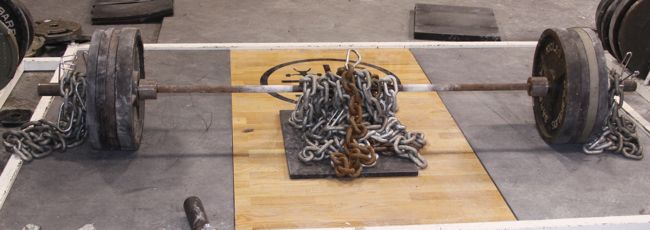
1. Pull correctly! This might seem ridiculously simple, but trust me when I say that I almost never see anyone doing pulling exercises correctly. Many times when doing pulling exercises, people just pull without giving a second thought to what muscles are actually doing the work. For example, when doing chin-ups, many people just pull themselves up until their chin clears the bar. If you look closely, you will see their shoulders rounding forward, their scapulae winging in the back, and their biceps doing most of the work. Because I already wrote an article about how to do pull-ups/chin-ups correctly, I won’t repeat myself. Check out how to perform a chin-up properly.
Performing a chin-up/pull-up correctly will increase lat activation and increase the strength of your scapular stabilizers as well as your lower traps.Now let’s move on to horizontal pulling movements.
The biggest problem I see here is that people don't retract their scapulae when they row. This can aggravate the shoulder and cause a host of other issues. Watch as Bill Hartman explains this way more eloquently than I ever could:
So there you go! Now you know how to do vertical rows and horizontal rows correctly. Keep in mind that doing these correctly is much harder than it looks and you can expect to go down in weight/reps quite a bit for a while as your low traps and lats catch up in strength to your biceps and upper traps. Before someone chimes in trying to prove their intelligence by stating the obvious, I will cover my bases by noting that, of course, there are exceptions to the “good form” rule. There are times when the goal is to row the most weight possible and form goes out the window a bit (i.e. Kroc rows).
2. Tip the scales in favor of pulling movements! Many of us understand the importance of balancing the movements we do in order to stay healthy. We do an upper body pulling movement for every upper body pushing movement we perform, and we throw in a triceps exercise for every biceps exercise we perform and so on. Well, what if I told you that I have found that this isn’t good enough? What if I told you that you should be doing two to three upper body pulling exercises for every one upper body pushing exercise you perform? Would you believe me?
Many of us sit at a desk, in a car, or at a computer for several hours every single day. We spend much of our day hunched forward trying to read our computer screen or our latest text message or trying to find the most lucrative spot for our next word in our 'Words with Friends' game. The point is that we spend hours in this position, not to mention that most guys spent at least the first 3–4 years of their training careers training chest and biceps three days a week (yeah, I’m talking to you!) and many women walk around all day lugging giant melons attached to their chests.
Basically, our everyday lives, compounded with the ridiculous training many of us did our first several years, equals postural disaster. It takes more than just “equal attention” given to the backside of our bodies to fix all the damage. We must do lots of extra upper back work to undo the damage and get us on the path to better posture. And never fear, it’s easy to add in quite a bit of upper back work without overtraining. My favorite way is to throw in a few light sets between other exercises. For example, if you do two upper body and two lower body workouts a week, alternate a light set of 15–20 band pull-aparts, face pulls, or YTI raises with one of your lower body accessory movements on each of your lower body days. It’s a fantastic way to sneak in some extra upper back work without overtraining or negatively affecting your lower body workouts. Just make sure you choose an exercise that isn't overly demanding and don’t go too heavy. You should notice quite a bit of improvement in both strength and development within a month or so. Oh and your shoulders will thank you!
3. Do both horizontal and vertical pulling movements! When designing your next weight training program, don’t forget to include both horizontal and vertical pulling movements.
Some examples of horizontal pulling movements include one-arm dumbbell rows, bent over rows, band pull-aparts, seated cable rows, and standing cable rows. Basically, it’s any rowing movement where you're pulling straight back and squeezing your scapulae together. Some examples of vertical pulling movements include: overhand pull-ups, neutral grip pull-ups, chin-ups, lat pull-downs, and kneeling cable pull-downs. Basically, it’s any movement where you're pulling down with a nice, tall chest and your scapulae are seated.
Of course, there are plenty of upper back movements that fall in between horizontal and vertical pulling movements. They're awesome and should be included, too. Some examples of these include chest supported rows, face pulls and one-arm face pulls (depending on where you set the cable), and 45-degree bent over rows.
Make sure you include plenty of movements from each category for a well-rounded program and a well-developed upper back. And don’t forget to do what you suck at! It’s human nature to enjoy doing what you’re really good at. If you kick ass at pull-ups, you probably do them often. If you rock out at bent over rows, they probably show up in your programs a lot. This tendency we have to include certain exercises in our programs while neglecting others is no bueno. Remember, the quickest way to improve aesthetics and overall performance is to bring up your weak areas. So swallow your pride and include a variety of movements in your workouts, including those things you aren’t good at (yet). ‘Nuff said.








